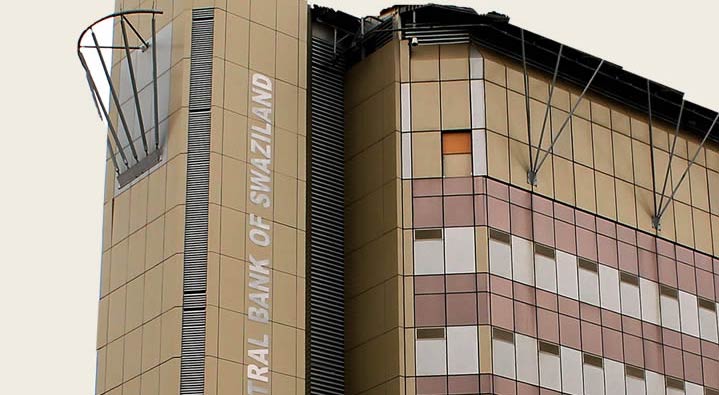The central bank of Eswatini, formerly the central bank of Swaziland, lowered its discount rate by 100 basis points to 5.50 percent along with other measures to support the economy in the short to medium term due to the impact of the coronavirus while safeguarding the credibility of the exchange rate peg.
It is the first rate cut by the Central Bank of Eswatini (CBE) since July 2019 and the fourth since it began easing its policy stance in January 2018 for a total easing since then of 175 basis points.
In addition to the rate cut, CBE on March 20 announced two measures to improve liquidity in the financial sector.
It lowered the liquidity requirement for commercial banks to 20 percent from 25 percent and to 18 percent from 22 percent for development, and cut the reserve requirement ratio by 100 basis points to 5.0 percent.
CBE added it would discuss other measures to ease financial conditions with financial firms, with the positive differential between South Africa's repo rate and the Eswatini discount rate giving it "monetary policy space should a change in the current stance be required."
On March 19 the South African Reserve Bank (SARB) cut its repo rate by 100 basis points to 5.25 percent in response to the expected hit to economic activity from the coronavirus, which SARB expects will lead to an economic contraction this year and push down inflation.
Eswatini's Lilangeni currency was introduced in 1974 at par with the South African Rand and is tied to it at one-to-one exchange rate.
In April 2018 the Kingdom of Swaziland was renamed the Kingdom of eswatini as part of the 50th anniversary of Swazi independence from British rule in 1968.
Other former colonies that have also changed their names including Nyasaland becoming Malawi, Rhodesia becoming Zimbabwe, North Rhodesia becoming Zambia and Bechuanaland becoming Botswana.
Eswatini's economy has been hit by drought in recent years, leading to higher public spending, a widening fiscal deficit to an average of 9 percent of gross domestic product and rising debt.
Last year the International Monetary Fund (IMF) cautioned Eswatini was at a critical juncture, with growth subdued, public debt rising and international reserves declining.
While growth prospects are hindered by falling private investment and declining competitiveness, the IMF welcomed recent fiscal measures to stabilize the economy, adding an ambitious structural reform is key to promoting private-sector-led growth and address poverty and inequality.
In 2019 Eswatini's economy slowed to 1.3 percent growth from 2.4 percent in 2018 and in February the IMF forecast growth this year of 2.5 percent.
CBE said its forecasts may change to due to the impact of the coronavirus.
Inflation in Eswatini rose to 2.8 percent in February from 2.7 percent in January but CBE said it had lowered its 2020 inflation forecast to 3.2 percent from 3.46 percent and the 2021 forecast to 4.04 percent from 4.12 percent, mainly due to lower crude oil prices, and lower than previous assumptions about the rise in electricity, water tariffs, and rental prices.
Eswatini's reserves amounted to 5.5 billion lilangeni, enough for 2.4 months of imports, as of March 13, down from 7.6 billion as of Jan. 10 and 6.1 billion at the end of December 2019.
The country's stock of debt, excluding arrears, amounted to 21.4 billion, or 31.9 percent of GDP at the end of December.






































